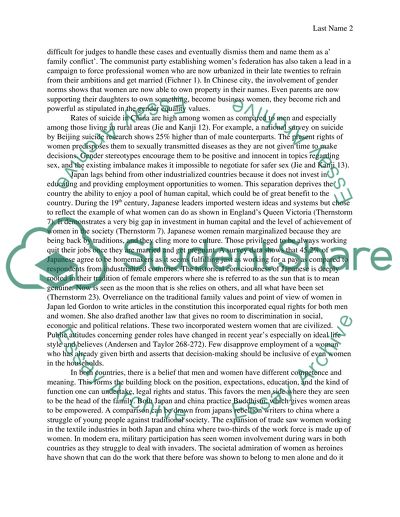Cite this document
(“Women's rights in China and Japan Research Paper”, n.d.)
Retrieved from https://studentshare.org/history/1670874-womens-rights-in-china-and-japan
Retrieved from https://studentshare.org/history/1670874-womens-rights-in-china-and-japan
(Women'S Rights in China and Japan Research Paper)
https://studentshare.org/history/1670874-womens-rights-in-china-and-japan.
https://studentshare.org/history/1670874-womens-rights-in-china-and-japan.
“Women'S Rights in China and Japan Research Paper”, n.d. https://studentshare.org/history/1670874-womens-rights-in-china-and-japan.


